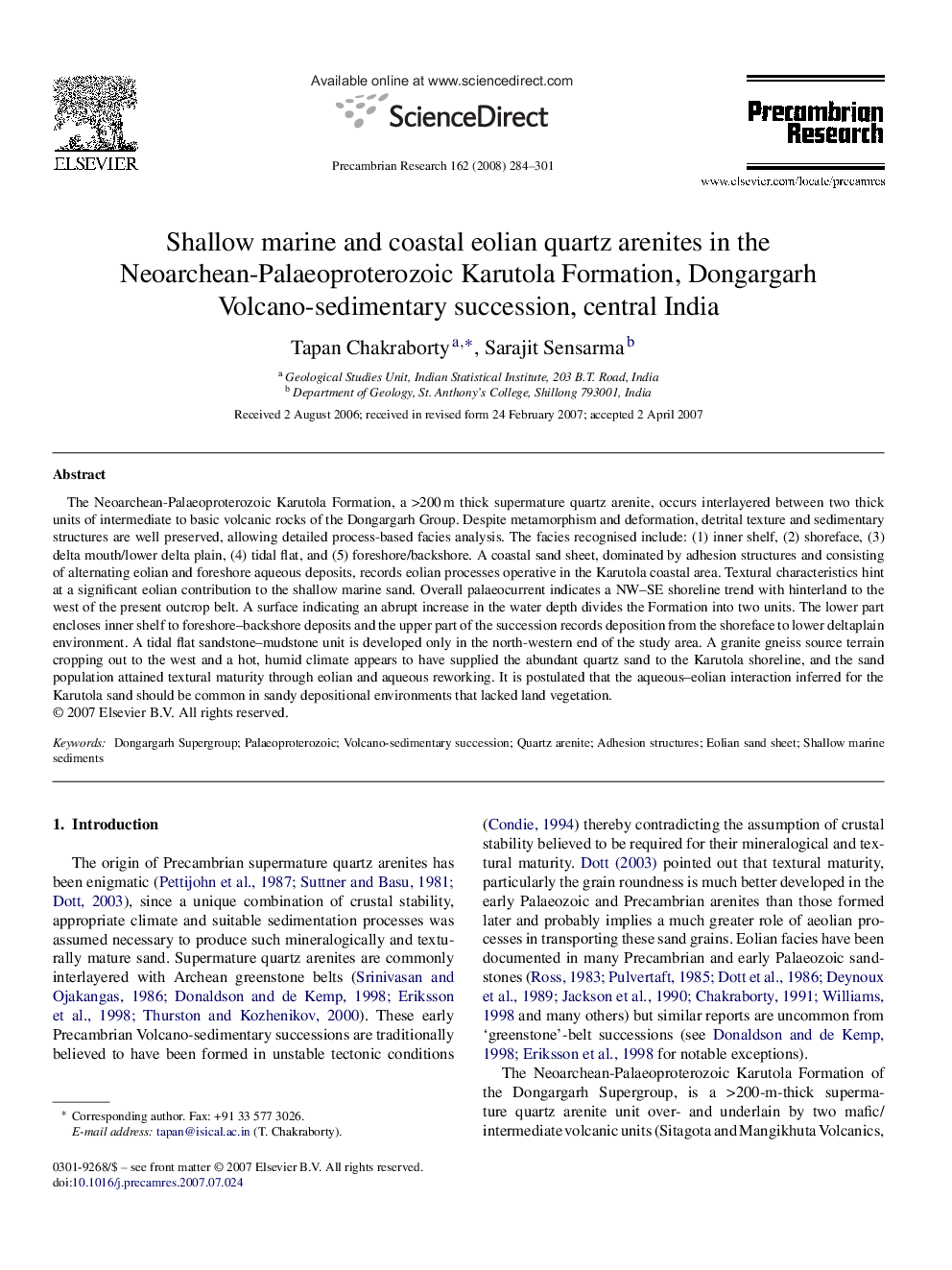| Article ID | Journal | Published Year | Pages | File Type |
|---|---|---|---|---|
| 4724278 | Precambrian Research | 2008 | 18 Pages |
Abstract
The Neoarchean-Palaeoproterozoic Karutola Formation, a >200Â m thick supermature quartz arenite, occurs interlayered between two thick units of intermediate to basic volcanic rocks of the Dongargarh Group. Despite metamorphism and deformation, detrital texture and sedimentary structures are well preserved, allowing detailed process-based facies analysis. The facies recognised include: (1) inner shelf, (2) shoreface, (3) delta mouth/lower delta plain, (4) tidal flat, and (5) foreshore/backshore. A coastal sand sheet, dominated by adhesion structures and consisting of alternating eolian and foreshore aqueous deposits, records eolian processes operative in the Karutola coastal area. Textural characteristics hint at a significant eolian contribution to the shallow marine sand. Overall palaeocurrent indicates a NW-SE shoreline trend with hinterland to the west of the present outcrop belt. A surface indicating an abrupt increase in the water depth divides the Formation into two units. The lower part encloses inner shelf to foreshore-backshore deposits and the upper part of the succession records deposition from the shoreface to lower deltaplain environment. A tidal flat sandstone-mudstone unit is developed only in the north-western end of the study area. A granite gneiss source terrain cropping out to the west and a hot, humid climate appears to have supplied the abundant quartz sand to the Karutola shoreline, and the sand population attained textural maturity through eolian and aqueous reworking. It is postulated that the aqueous-eolian interaction inferred for the Karutola sand should be common in sandy depositional environments that lacked land vegetation.
Keywords
Related Topics
Physical Sciences and Engineering
Earth and Planetary Sciences
Geochemistry and Petrology
Authors
Tapan Chakraborty, Sarajit Sensarma,
